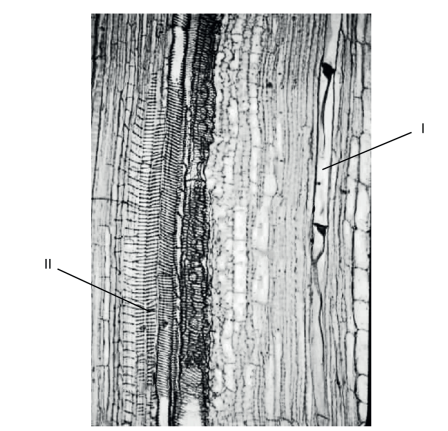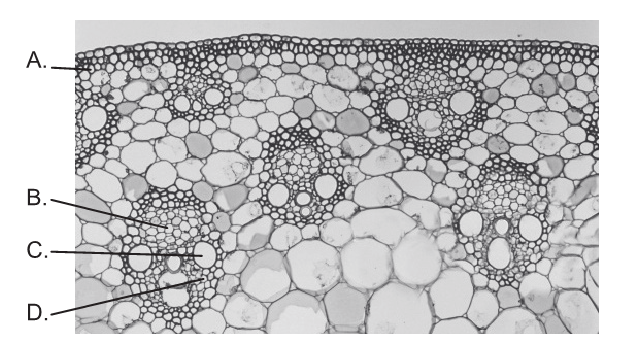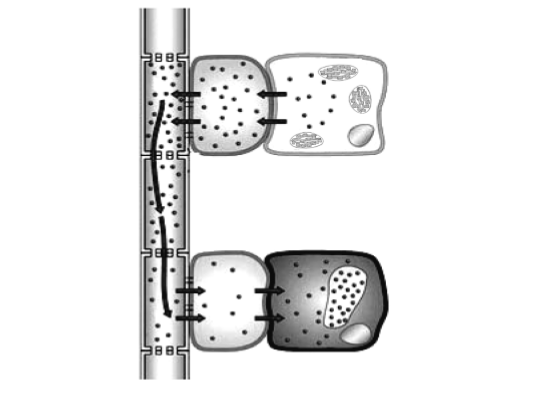IB Biology HL (HIGHER level)- 2024 – Practice Questions- All Topics
Topic 9.2 Transport in the phloem of plants
Topic 9 Weightage : 8%
All Questions for Topic 9.2 – Active Translocation, Phloem Structure, Phloem Loading, Mass Flow, Translocation Rate, Xylem versus Phloem, Storage Organs, Fungal Hyphae
Question
The image shows part of a section through the stem of a non-woody plant.

Which feature distinguishes the transport of materials in the tissue labelled I from that in the tissue labelled II?
In II, active transport is used.
In II, products of photosynthesis are transported.
In I, movement of materials is the result of transpiration.
In I, there is a higher solute concentration.
▶️Answer/Explanation
Ans: D
In the tissue labelled I, the movement of materials is the result of transpiration. Transpiration is the process by which water is lost from the leaves of a plant. This loss of water creates a negative pressure gradient that pulls water and dissolved minerals up from the roots and into the stem. This process is known as the transpiration stream, and it is driven by the difference in water potential between the soil and the leaves. As a result, the concentration of solutes is higher in the tissue labelled I than in the tissue labelled II.
Which letter identifies phloem?

▶️Answer/Explanation
Markscheme
B

The tissue labelled B in plants is known as phloem. Phloem is responsible for the transportation of organic compounds, such as sugars and amino acids, from the leaves to the rest of the plant. Phloem is made up of specialized cells called sieve tubes, which are arranged end to end to form long tubes. These tubes are connected by sieve plates, which allow the flow of materials between adjacent cells. The phloem is located on the outer side of the vascular bundle, which is the bundle of xylem and phloem tissues that run through the plant. Therefore, the tissue labelled B is phloem.
The diagram below shows part of the vascular system of a dicotyledonous plant. Which process is indicated by the arrows?

A. Passive translocation of sucrose from the sink to the source in the phloem
B. Active translocation of sucrose from the source to the sink in the phloem
C. Passive translocation of sucrose from the sink to the source in the xylem
D. Active translocation of sucrose from the source to the sink in the xylem
▶️Answer/Explanation
Markscheme
B
The process indicated by the arrows is the transportation of sucrose from the source to the sink in the phloem. The phloem is responsible for the transportation of organic compounds, such as sugars and amino acids, from the leaves, which are the source, to the rest of the plant, which includes the sink. The source is the region of the plant that produces the sucrose, while the sink is the region that consumes it. The transportation of sucrose occurs by active translocation, which means that energy is required to move the sucrose from the source to the sink. Therefore, the correct answer is B. Active translocation of sucrose from the source to the sink in the phloem.
